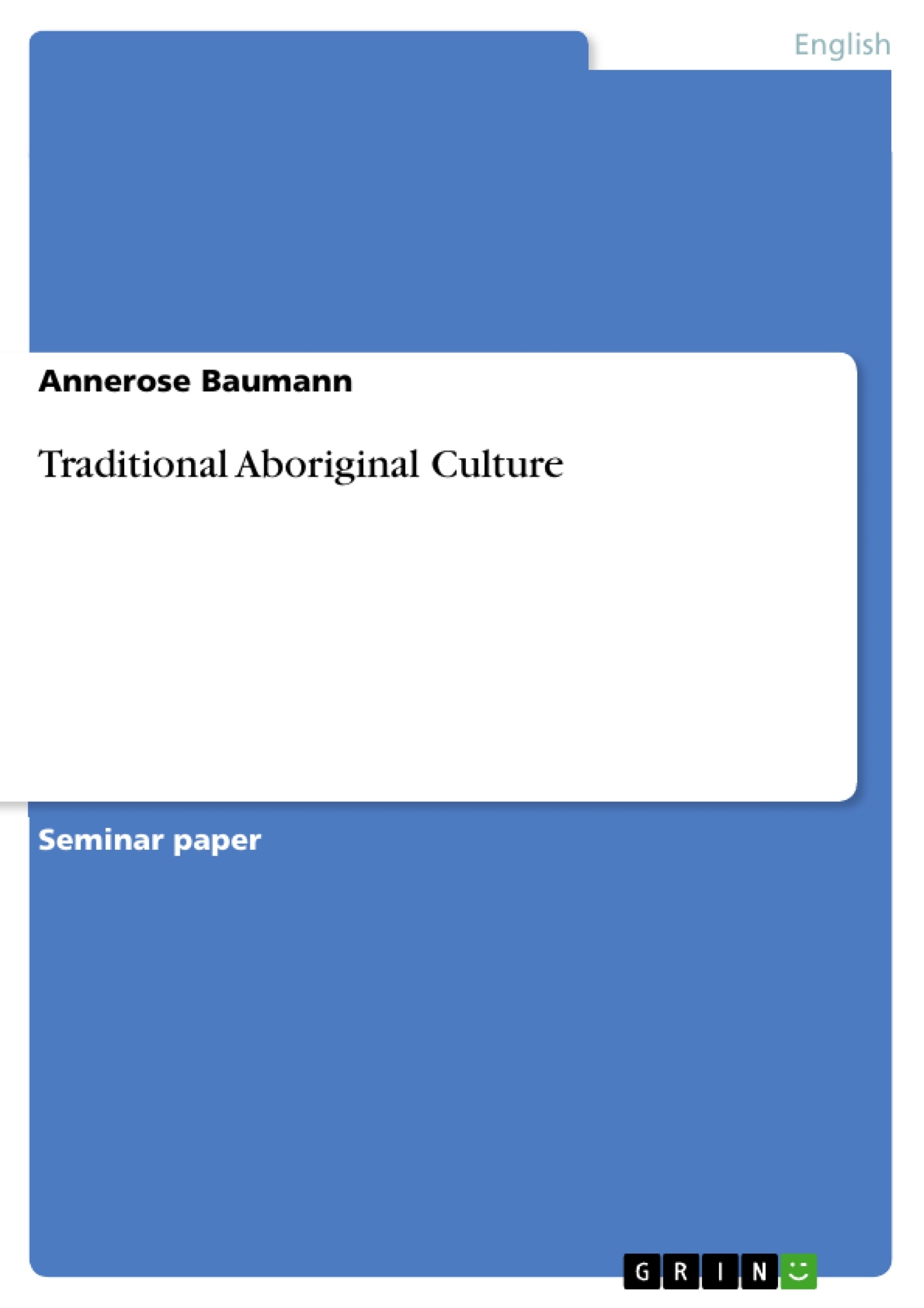This term paper illustrates some important elements of traditional Aboriginal culture, showing what it was like before European settlers arrived.
Table of Contents
- Introduction
- The Aborigines and Their Land
- Their Origin
- Tribes and Languages
- Social Organization
- The Aboriginal Aspect towards Land
- Traditional Lifestyle and Beliefs
- Providing Food
- Accommodation and Clothes
- Trade
- Myths, Beliefs and Religious Ceremonies
- Birth, Initiation and Death
- Traditional Aboriginal Art
Objectives and Key Themes
This term paper aims to shed light on significant aspects of traditional Aboriginal culture, providing a glimpse into life before the arrival of European settlers. It hopes to showcase the captivating nature of this ancient and multifaceted culture, highlighting the importance of preserving its remaining elements for the sake of the people who draw their life energy from it.
- Origins and beliefs of the Aboriginal people
- Traditional social organization and kinship systems
- Traditional lifestyle, including hunting, gathering, and food sources
- The importance of land and the Dreaming in Aboriginal culture
- The role of art, music, and ceremonies in preserving and transmitting cultural knowledge
Chapter Summaries
The first chapter provides an introduction to the topic of traditional Aboriginal culture, discussing the historical context of European colonization and its impact on Aboriginal society. The second chapter delves into the origins of the Aboriginal people, exploring theories about their migration and outlining the diversity of tribes and languages across the continent. It also examines the social organization, kinship systems, and unique relationship with the land that defines Aboriginal culture.
The third chapter examines the traditional lifestyle of the Aboriginal people, focusing on their hunting and gathering practices, methods of obtaining water, and traditional forms of housing and clothing. It also explores the complex trade network that existed across the continent, including the exchange of goods, myths, stories, and ceremonial objects. The chapter concludes with a detailed exploration of the Dreaming, a central concept in Aboriginal belief, and its role in shaping social norms, ceremonies, and the understanding of the world.
Finally, the third chapter examines the traditional lifestyle of the Aboriginal people, focusing on their hunting and gathering practices, methods of obtaining water, and traditional forms of housing and clothing. It also explores the complex trade network that existed across the continent, including the exchange of goods, myths, stories, and ceremonial objects. The chapter concludes with a detailed exploration of the Dreaming, a central concept in Aboriginal belief, and its role in shaping social norms, ceremonies, and the understanding of the world.
The fourth chapter, focusing on the traditional Aboriginal art, delves into its significance as a means of conveying religious and cultural knowledge. It discusses the distinctive styles of rock paintings, carvings, and other forms of artistic expression, emphasizing their connection to the Dreaming and the importance of their preservation.
Keywords
The main keywords and topics of this work include traditional Aboriginal culture, the Dreaming, ancestral spirits, social organization, kinship systems, hunting and gathering, land rights, traditional art, ceremonies, and the impact of European colonization.
- Citar trabajo
- Annerose Baumann (Autor), 2006, Traditional Aboriginal Culture, Múnich, GRIN Verlag, https://www.grin.com/document/165559




